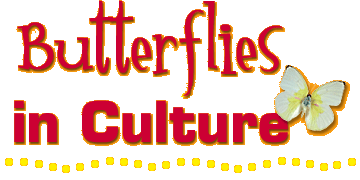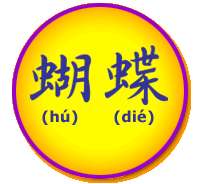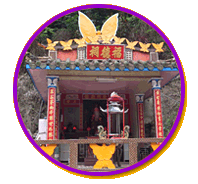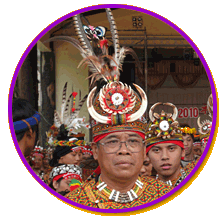


Listen to the pronunciation of "butterfly" in Chinese.
Most people in Taiwan are Han Chinese. In Han culture, butterfly motifs are common in crafts, paintings, and even buildings.
To understand why butterflies are such popular symbols, look at the Chinese characters for "butterfly" 蝴蝶 (hú dié) and listen to the pronunciation. The first character 蝴 (hú) has a similar sound as the character 福 (fú) for "good fortune." This is why butterflies are symbols of good luck. The second character 蝶 (dié) has the same sound as the character 耋 for "the elders." So butterflies are often seen in artwork celebrating a long life.

The annual Yellow Butterfly Festival celebrates and protects butterflies and their habitats. Organized by local people and conservation groups, the festival features performances, costumes, butterfly-watching hikes, and ceremonies to honor butterflies.
Butterflies carry meaning for Taiwan's indigenous groups, too. For the Rukai people, the butterfly is a symbol of swiftness when used on headdresses. It is a symbol of diligence when used on clothes. The Paiwan people use tribal beads of the Swallowtail to decorate a person who is fast and nimble. And the Tao tribe believe that Magellan's Iridescent Birdwing represents evil spirits.

In the Rukai tribe, wearing a butterfly headdress is a great honor granted by the chief. These men run so swiftly, they have won the title "lyalivarane." It means "butterfly"!
Image Credits:
This is a collaborative project between the American Museum of Natural History (AMNH) and the National Museum of Natural Science in Taiwan (NMNS) to share and exchange their digital resources and extend their outreach to global audiences.Photos: © National Museum of Natural Science Taiwan




 Biodiversity
Biodiversity
 Brain
Brain
 Genetics
Genetics
 Marine BiOLogy
Marine BiOLogy
 MicrobiOLogy
MicrobiOLogy
 PaleontOLogy
PaleontOLogy
 ZoOLogy
ZoOLogy
 AnthropOLogy
AnthropOLogy
 ArchaeOLogy
ArchaeOLogy
 Astronomy
Astronomy
 Climate Change
Climate Change
 Earth
Earth
 Physics
Physics
 Water
Water


